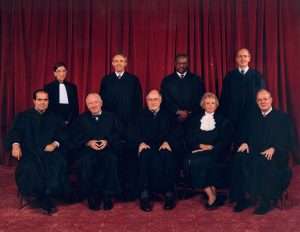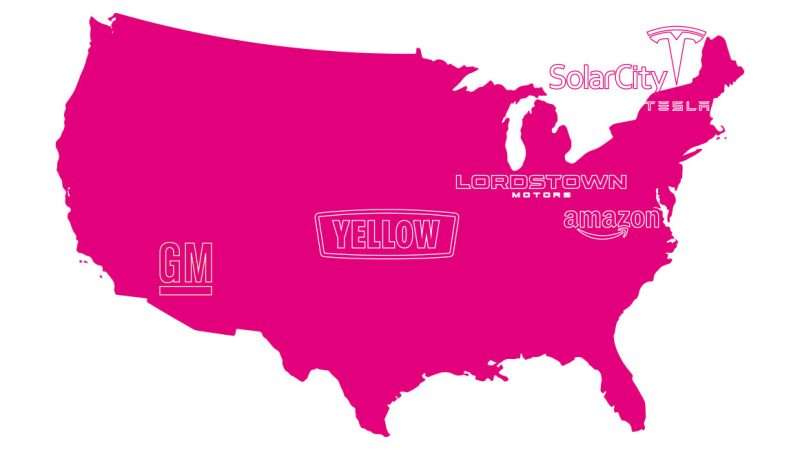
Shock therapy involves a shock: Argentine leftists seem to have misunderstood the words newly elected libertarian President Javier Milei was saying. In his inauguration speech, Milei assured Argentines that the economic situation would get better—but to brace for turbulence in the short run.
Argentina’s inflation rate is over 200 percent, above even nearby Venezuela’s. The country owes $45 billion to the IMF. Roughly 40 percent of the population lives in poverty. There’s no option but to attempt to dig the country out of the hole by implementing severe austerity measures. But that doesn’t mean the people—who remain, in many cases, disturbingly unaware of how they have been swindled for decades by Peronist leaders—are supportive of Milei’s plan.
Yesterday, thousands took to the streets in a protest slash work stoppage organized by some of the country’s most powerful unions. Quotes from protesters were just stunningly detached from reality, mostly because it seems people on the ground fail to grasp what shock therapy means.
Alicia Pereyra, a 63-year-old retiree who spoke to Al Jazeera, opposes Milei’s changes to labor law and scrapping of rent regulation. “He wants us to be slaves,” she told the publication.
“Before we used to have asados [barbecues] every Sunday. Not now. Even rice is very expensive,” Elizabeth Gutierrez—a nurse finishing up an overnight shift—told Al Jazeera. “Rents have shot up. You can’t live off your salary any more: It’s not enough.”
“The unions are the only ones that help and that are with the people, with the workers,” 78-year-old Víctor Saragusti told The New York Times.
The actual plan: After he took office, Milei deliberately devalued the Argentinian peso by 54 percent—so inflation shot up. He slashed the number of government ministries in half in order to cut public spending. Federal transfers to Argentina’s roughly two dozen provinces were slashed. “Real wages fell in December more than in any other month since at least 2002,” economist Santiago Manoukian told Al Jazeera.
Interestingly, Milei has also raised import tariffs (from 7.5 percent to 17.5 percent) and extended an export tariff (hovering at 15 percent), while fortifying the social safety net, ostensibly on a temporary basis. Argentina’s food stamp equivalent and child benefits will both double during this temporary period, despite Milei’s broader commitment to slashing government spending, seemingly to make sure poor people don’t starve amid this difficult time.
These details, of course, are not emphasized by the people protesting, who attribute their economic malaise to Milei, despite the fact that the situation had been dire right before he took office as well.
“There are two Argentinas,” Milei said before the protests. One is backward, and the other “puts us on the path to be a developed country.”
Unions are no longer running the show: Patricia Bullrich—who ran against Milei but now serves in his administration—called the unions who organized the strikes, and frequently attempt to block nonstriking folks from going to work, “guarantors of poverty.”
“Of 21 million workers, only 0.19% mobilized, if we consider La Cámpora and social organizations among the workers. 40 thousand people,” wrote Bullrich on X. “Total failure.”
“There is no strike that stops us, there is no threat that intimidates us,” she added.
There’s a lot of truth to Bullrich’s words. Milei has taken a hard line on protesters including cracking down on road blocking and docking pay for state employees who take part, measures meant to restore order in a country frequently crippled by union activity.
For more on Milei’s shock therapy, check out this article from The Economist, and this media malpractice post from my Twitter feed.
Scenes from New York: “New York City declared Wednesday that it’s the first city to issue an advisory officially designating social media as an environmental toxin,” reported Axios. The city’s new guidance, from the Department of Health and Mental Hygiene, directs adults “to promote use of social media in a manner that is protective of youth mental health” by “implementing tech-free times and places in relevant settings that encourage in-person connection” and “modeling healthy social media use, including sharing use practices and how to be thoughtful with use.”
The city is also encouraging parents “to delay giving children access to a smartphone, or similar device that can access social media, until at least age 14, and then reassess based on the current evidence of harms and the child’s strengths and needs.”
None of these are bad ideas, but why are overpaid government bureaucrats telling me how to do my job as a parent? Does this type of guidance ever end up actually having the intended impact? Could these damn people in government just, like, competently tackle the rat problem or the migrant crisis or subway crime and cleanliness—the things they’re actually tasked with doing, yet never seem to make headway on—instead of filling their days writing utterly useless documents like this one?
QUICK HITS
- I hereby present to you the worst takes of the internet this week, this time on Margot Robbie’s Oscar snub for her role in Barbie (which apparently means the patriarchy is alive and well, according to Twitter’s biggest brains):
Greta & Margot,
While it can sting to win the box office but not take home the gold, your millions of fans love you.
You’re both so much more than Kenough.#HillaryBarbie
— Hillary Clinton (@HillaryClinton) January 24, 2024
- The free speech/DEI/antisemitism battles come to Cornell.
- Trump rallies now feature the most transparent/predictable song by The Smiths (but there are plenty of other viable picks). Meanwhile, the rest of us have our election season anthem locked and loaded.
- Our Amazon overlords have decided, at long last, that law enforcement must get a warrant to access Ring camera footage.
- “Manhattan’s District Attorney Is Quietly Preparing for a Trump Trial,” reads a front-page New York Times headline (so maybe not so quiet after all).
- When chatbots talk people out of suicidal ideation.
- The heads of semi-dueling civil liberties organizations—the Foundation for Individual Rights and Expression and the American Civil Liberties Union—are having an interesting back and forth about the state of free speech in America in the pages of The New York Review and Substack (with a Reason mention, of course, in Greg Lukianoff’s rebuttal to David Cole).
- “Few substances are simply good or bad, and none are miracle cures nor demon pills,” writes Reason‘s Nick Gillespie in a must-read thread on today’s drug war hysteria:
'Woman gets probation for fatal stabbing during weed-induced psychosis.'
Expect to read more headlines like this as the century-old drug war sputters to an end and various upholders of the status quo try to maintain prohibition by attributing magical superpowers to substances… pic.twitter.com/af38w2yE69
— Nick Gillespie (@nickgillespie) January 24, 2024
- Does anyone else feel like everything in mainstream American TV/movie culture is recycled or refurbished right now? We’re in the era of endless remakes—some good, others horrible—and the perpetual re-upping of old hosts, occasionally with fresh gimmicks. With this Jon Stewart news, I am reminded that there is only one truly wise and funny man in all of TV (Larry David, who is choosing to sunset Curb Your Enthusiasm after season 12 airs this spring).
Big news: JON MF STEWART is returning to host The Daily Show on Mondays through the election, with a deal to EP all nights and possibly stay through 2025. A big test of his appeal in a media landscape that’s changed A LOT since 2015, but for me this news is literally this gif: pic.twitter.com/Xce1U0ols3
— Matthew Belloni (@MattBelloni) January 24, 2024
- Live footage of the Biden/Trump matchup:
every day for the next ten months pic.twitter.com/aLhDuzg0ky
— siraj hashmi (@SirajAHashmi) January 24, 2024
The post Guarantors of Poverty appeared first on Reason.com.
from Latest https://ift.tt/nzxVvNb
via IFTTT



